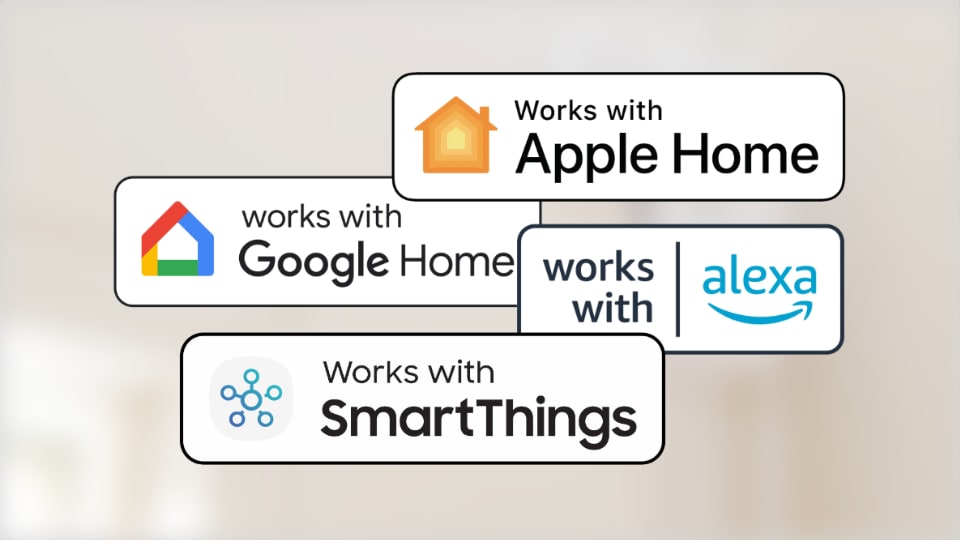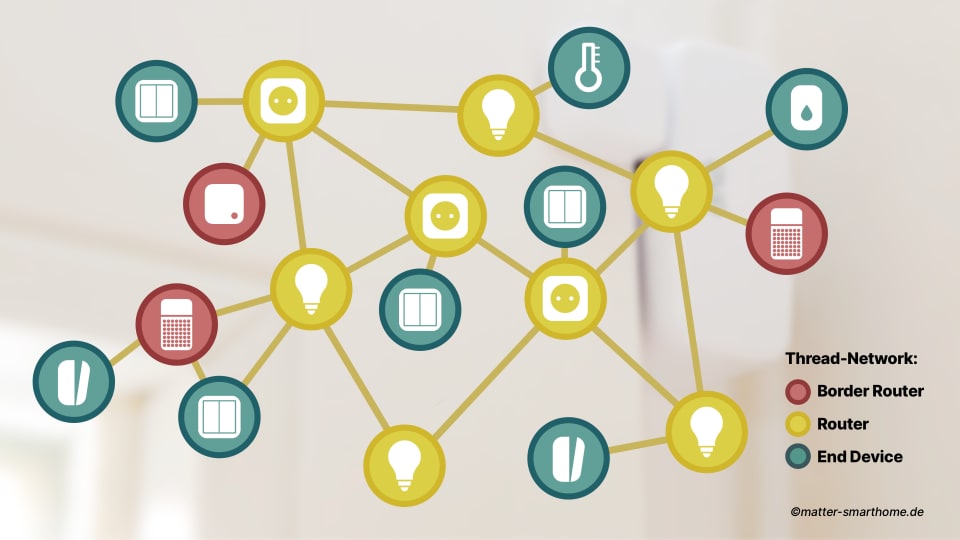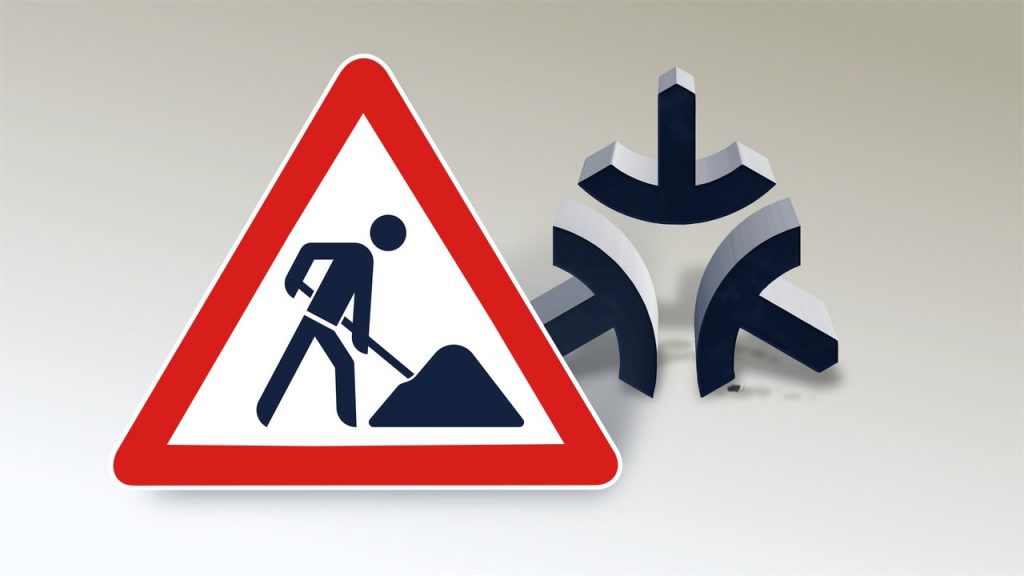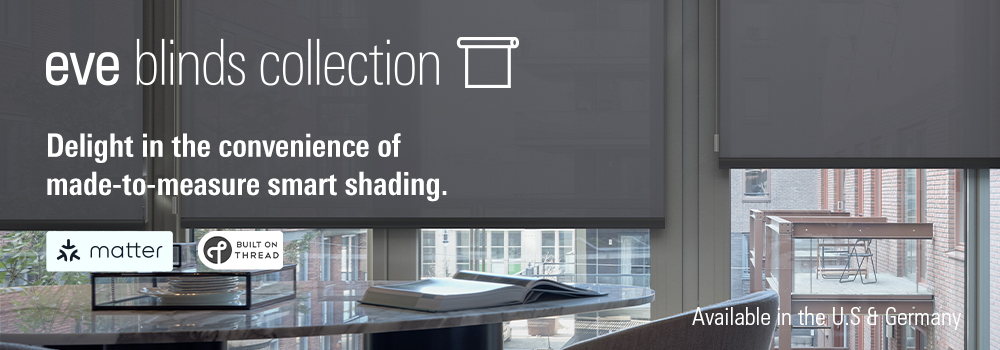Media coverage of the Matter standard often runs ahead of reality. The news is all about product announcements and new device categories, the latest software releases and upcoming functions. Unfortunately, these reports give the impression that implementation is progressing at the same pace. However, while the number of products is constantly increasing, there are still problems and construction sites waiting to be finished. Only when they are completed – or effective detours are in place – will Matter be able to reach its destination of making smart home installation really simple and popular.
1. Functional differences
Practical use shows that Matter is a powerful smart home standard, but it does not provide the same standards in all smart home systems. The black and white logo stands for general usability of devices, that they comply with the Matter specifications. Whether the controller of choice can do anything with them – and to what extent – depends on the system.
One example: The Nuki Smart Lock is currently unusable with Matter Controllers from Amazon because the software of these controllers does not yet support door locks. Alexa and Google Home can do little with Matter buttons or light switches, which excludes products such as the Tuo Smart Button or the push-button coupler from Innovation matters from both systems. The same applies to certain device types on a Matter Bridge. For example, remote controls from the Philips Hue system are available as operating elements in Apple Home and SmartThings, but not in Amazon and Google.
Manufacturers such as Siegenia (link) or Tuo (link) are trying to solve the problem by publishing information on which Matter Controllers their devices work with. Such compatibility lists have existed in the past, and many early adopters had hoped that Matter would put an end to this practice. Currently, however, it does not look like that will happen. The platforms’ own certification programs also retain their significance: a “Works with … Alexa … Apple … Google … SmartThings” on the device box ultimately guarantees 100% compatibility. The Matter lettering cannot yet achieve this.

It is difficult to say when it will be able to do so – and whether it will even get that far. The major platforms, from Amazon to SmartThings, would have to voluntarily coordinate their approach. Or be obliged to do so by a third party: Companies such as Ubisys have long wanted controllers to be scrutinized more closely during certification. “They should at least demonstrate basic functionality for all devices officially supported by Matter,” Ubisys Managing Director Dr. Arasch Honarbacht told matter-smarthome.
In the meantime, third-party providers have an opportunity to map the standard as comprehensively as possible and support all Matter functions in a short space of time. A system like Home Assistant (link) would be predestined for this. As an open-source project with independent developers, it can react faster and more flexibly than a large corporation. While Apple has been the leader in the implementation of the standard to date, Home Assistant is currently catching up. However, the do-it-yourself solution is particularly appealing to hobbyists and early adopters. And wasn’t that the corner the industry actually wanted to get out of with Matter?
2. Thread network
The Thread radio protocol is one of the main pillars of the Matter standard. It allows large, self-organizing and healing networks. End devices and so-called Border Routers, which establish a connection to the rest of the building, should work together smoothly – regardless of which vendor they come from. So much for the theory.
In practice, things still look different currently because the cross-manufacturer mix of Border Routers in particular does not work reliably. Instead of moving end devices into a common wireless network, some Matter Controllers set up their own Thread networks. Products are thus distributed across several instances in the home and do not contribute to the reinforcement of a central, meshed network. If the spatial distance between individual components becomes too great, there is even a risk of connection issues.
And even if it is possible to install a cross-vendor mesh using workarounds (link), this network can remain unstable. Months of experimentation in testing rooms of the smart home blog digitalzimmer.de (link) have shown that Matter over Thread works best so far when all Border Routers come from the same brand. In other words: Apple’s Home platform only uses HomePods and Apple TVs, a Google Home only Nest products and so on.

Matter platforms can use solutions such as the digital keychain in Apples iOS operating system to exchange the access data (“credentials”) of such Thread networks with each other to form a shared mesh. However, this method is not standardized in Matter. Apple, Google, SmartThings & Co. have to negotiate it individually. In the experience of many users and manufacturers, not an ideal situation.
This is why the organization responsible for Thread is now tackling the issue at network level. In a Thread Group blog post, the manufacturer alliance writes that credential sharing is to be optimized across system boundaries (link). Network diagnostics are also on the agenda for 2024, with new, standardized methods to facilitate troubleshooting. Work is underway to solve the problem. However, it may be some time before the measures take effect.
3. Setup process
The QR code on Matter devices undoubtedly simplifies commissioning. However, it is only one element in the product setup process. Many manufacturers embed the scan in their own operating procedures, some of which differ significantly from one another – depending on whether the company offers an app with extended functions, whether the software serves as a Matter controller or not. For example, in a digitalzimmer test of eight smart Plugs sockets, almost no two set-ups were the same (link).
In addition, there are differences between the Matter ecosystems, which set their own accents with self-developed setup aids such as Fast Pair (Google) or Frustration Free Setup (Amazon). Sometimes the app of the controlling platform automatically recognizes new products as soon as they are switched on – sometimes the QR code has to be scanned first for something to happen. Users who always stay in the same ecosystem hardly notice these differences. However, changing the Matter platform – or the smartphone operating system – can be as irritating as switching from a car with an automatic transmission to a manual gearbox.
The same applies to perhaps the most interesting and eagerly awaited innovation in the Matter standard: multi-admin. If you want to operate your devices on several platforms in parallel, you should be adaptive. Because the setup is by no means standardized. Not only is it called differently: the apps refer to “pairing mode”, “linked Matter apps” or “sharing with other services”. Logging in to the second or third-party system also looks different everywhere and is carried out individually: by code scan, by manually entering numbers on the screen, with automatic recognition of the third-party fabric or without.

More harmonization please
There may be other construction sites that remain hidden from users. However, the three mentioned have one thing in common: they can best be solved collectively – by harmonizing processes and agreements between the companies involved. Currently, standardization is mainly taking place under the hood. This will please technology fans who have the time and desire to try things out and enjoy tinkering with their smart home.
To appeal to a mass audience, however, Matter should present itself as a full solution – like a street sedan that is easy to drive and has a desirable body. Differences in features are possible and very welcome. But turn signal remains a turn signal and should be self-explanatory. Imagine if car manufacturers had come up with their own terms for every function – from the airbag to the heating control. And certain highways could only be traveled by specific vehicle types …
Share this information:


